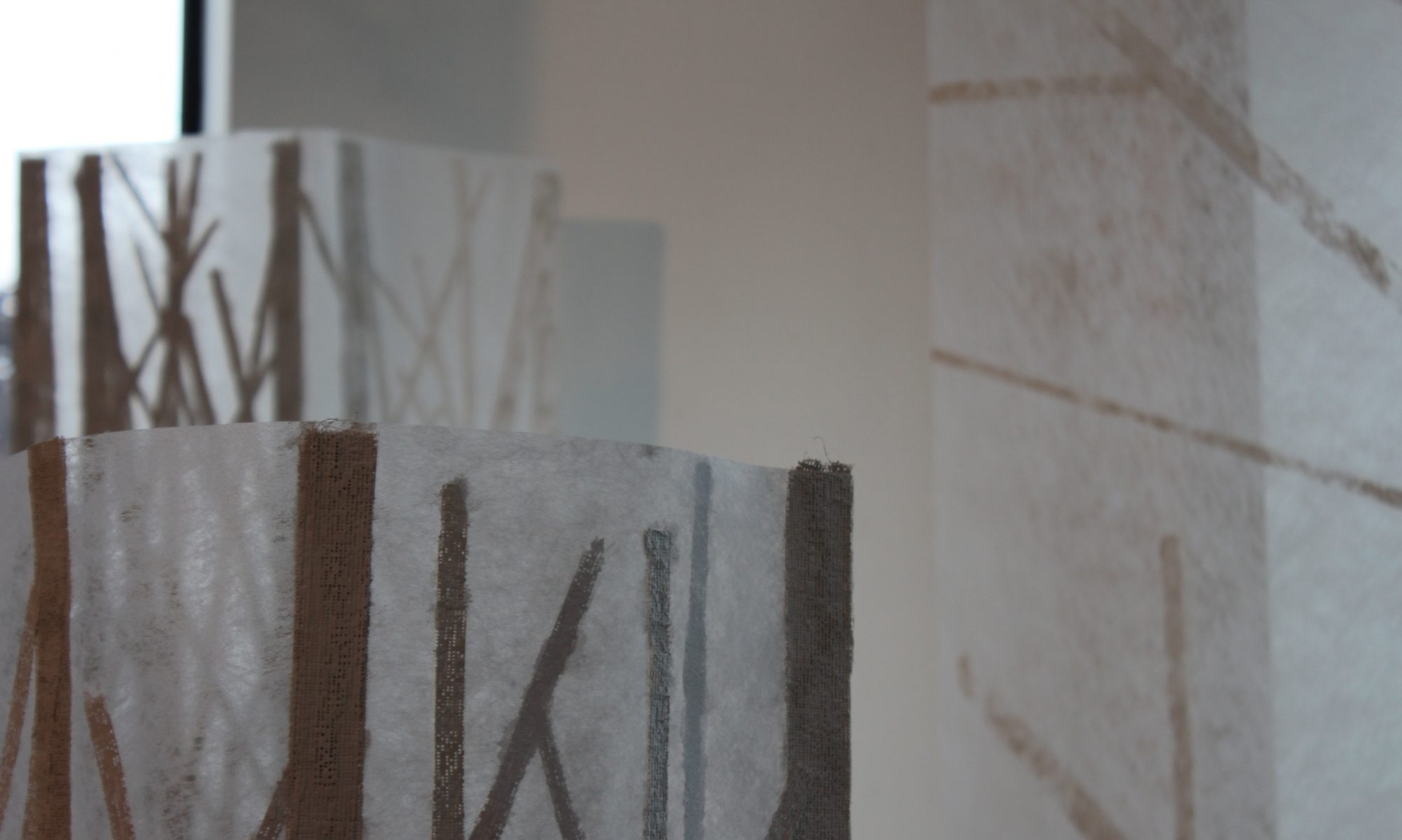Putting the term ‘bio artists’ into a search engine, produces some glorious results – quite edifying. The term arose while I was watching the ‘dual brain’ TED talks and I am thankful, not only to have discovered some fascinating art as a result but, also; appeasing the frustrations I felt at the beginning of the week, discovering some artists actually working in textiles around the ideas I am exploring.
First, I came across Melissa Fisher https://www.mellissafisher.com and within her site, work entitled ‘Microbial Me’. This, I find completely fascinating.
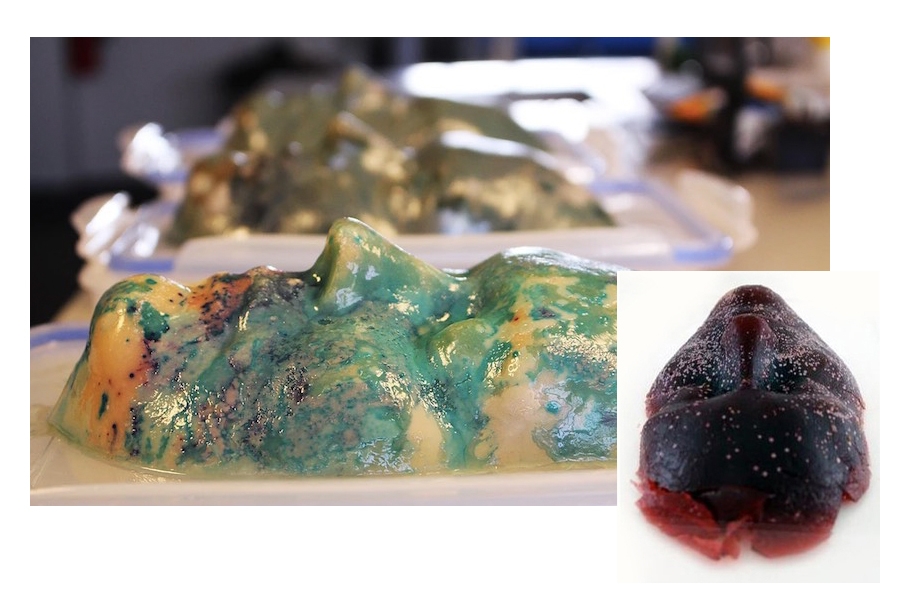
Her site is well worth taking the time to browse thoroughly; raising interesting notions about, art being able to make the unseen visible, about artists working in tandem with research scientists – I LOVE THAT IDEA!!! – and about the team of artists involved in the ‘The Invisible You: The Human Microbiome’ project at ‘The Eden Project’. I must confess that I feel like a bit of a green eyed monster – I’d love to do work in a context like that!!! but more on the Eden Project in a minute.
Regarding Melissa’s work, I am intrigued, in particular, by the beauty of these etchings,
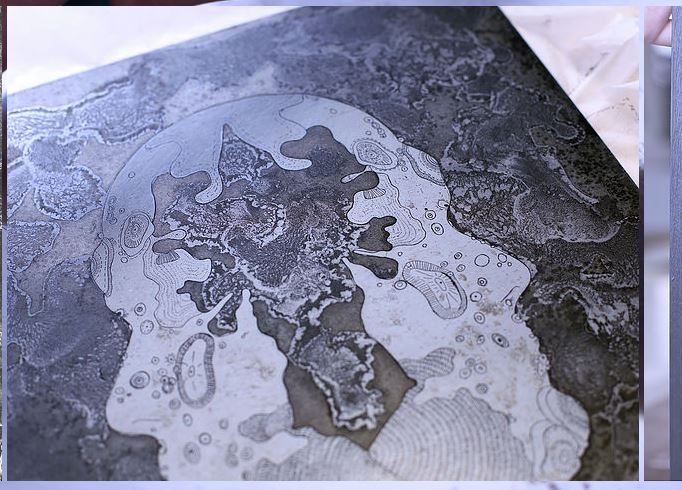
and the way her process evolves from the ‘living’ sculptures created on the agar face moulds through drawing processes to the making of the etchings – stunning.
Browsing The Eden Project Microbe Art – Sketchbook research pages.
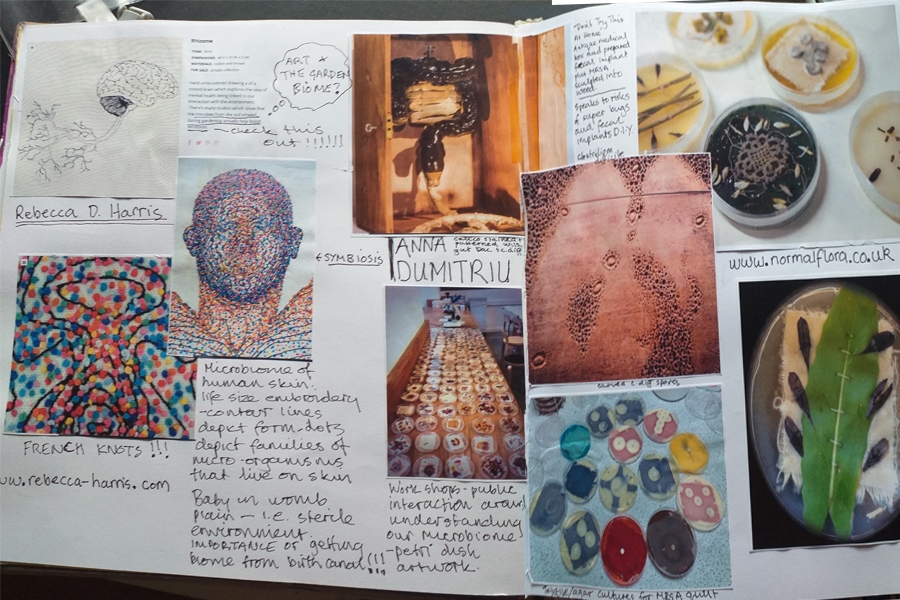
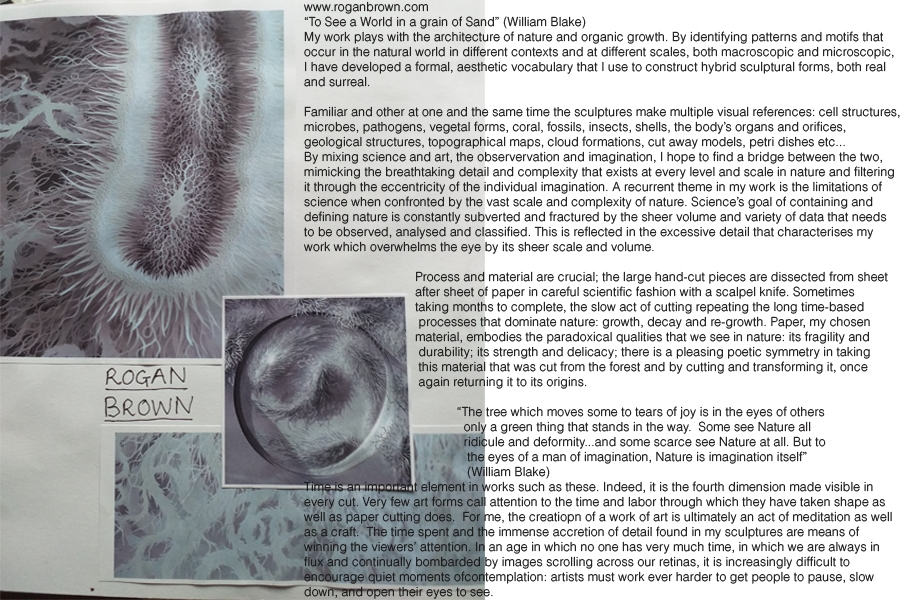
I expanded my research from the Eden website and from reading the catalogue by visiting the websites of the artists whose work had caught my eye. I thoroughly enjoyed reading Rogan Brown’s reflections upon his work and the description of how material, process and concept unite in the realisation of his work.
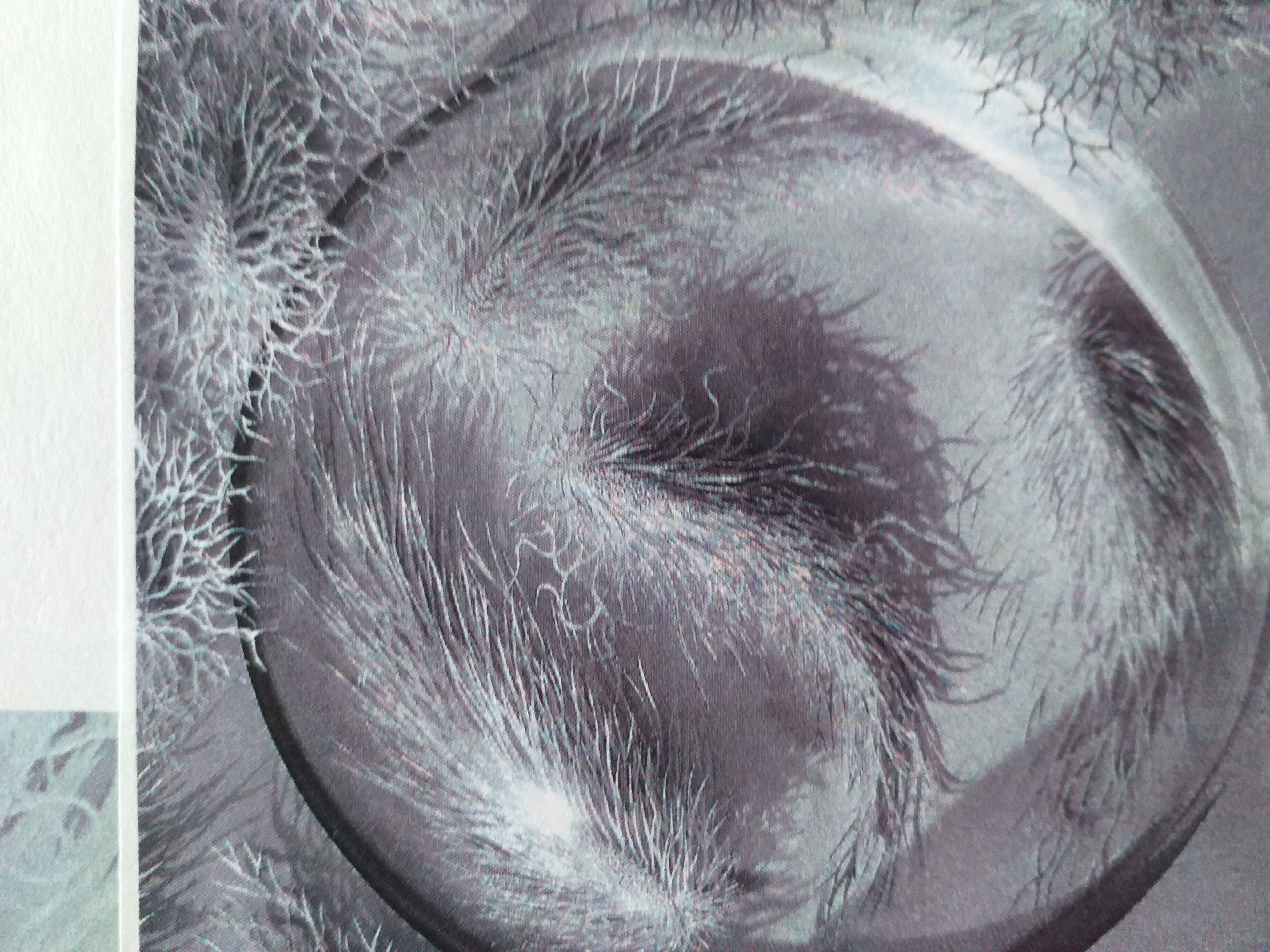
” Art and science are each valid ways of seeing the world: Science makes us understand what we see, and art makes us feel it. Art can therefore act as a valuable bridge between science and the general public, taking the complex factual data that scientific research provides, and through craft and imagination, make it accessible and pleasurable for people without specialised training.”
Rogan Brown.
This quotation from Rogan Brown about the potential links between art and science, reminds me of some of the teaching points I made about art and science at JCS when I was doing the ‘nature’ topic with the Y9 students. One of the ideas I invited them to consider (when they were researching hyper-realist artists) was the place such work can have ‘in the real world’ (i.e. to contextualise it) I was quite interested, in how artists can actually bring clarity to ‘people’ with specialised training’ , and not just as Rogan suggests, ‘make information pleasurable to people without it’. At the time, I introduced the students to work by medical illustrators and we discussed the merits of that type of visual reference for scientists rather than, for example, photographs….. the latter often depicting just a gory mess whereas, through drawing, specific structures can be revealed more clearly. Back then, I was quite intrigued by Johns Hopkins University’s Art/ Medical Science course gallery. More art/science validation I think, coming from the enabling work( for patients), that anaplastology artists can do!

https://medicalart.johnshopkins.edu/

